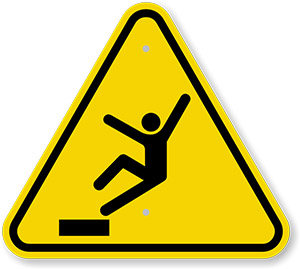
Material Handling Netting Prevents Hazardous Falls
- Material Handling Netting
- May 2, 2018
Many of our past blogs have focused on safety in the warehouse. Safety is one of the most important elements of a quality material handling system and will protect your employees, customers, products and equipment. Safety netting is an often overlooked item that can complete your safety system. Not preventing falls was named one of theTop 10 OSHA Violations for 2012. Check out the OSHA Regulations on preventing falling materials:safety net for pallet rack, pallet rack safety net clearwater
Safety netting can help you meet these regulations by adding them to your pallet rack systems, mezzanines and conveyor belts. Take pallet rack as an example. Pallet rack can easily be jostled by a forklift or truck collision, or a fork truck driver may accidentally push items off the other side when loading or unloading. Having a safety net in place prevents fallen material from hitting the people below, the floor, or other products.
Safety netting can serve multiple purposes:
Improve safety for employees
Protect work stations from falling inventory
Improve safety for customers in the aisles below the racking
Reduce damage to warehouse goods – both falling products and the items that fallen goods may land on
Prevent falls between back-to-back racks
Secure mezzanine railings
Industrial safety netting is usually mesh. It has fine holes, allowing light and air to penetrate but still strong enough to catch falling products. Mesh can be washed, and the Food and Drug Administration (FDA) has accepted mesh for use in sanitary applications like freezer and food-packing. Most nets are resilient and made to stretch to absorb shocks and loads, then return to their original shape.
Here are some of the key applications for safety netting that will protect your people and your business from costly, sometimes fatal, injuries due to falls or falling objects in your warehouse:
Storage Racks with Loading on One Side
On racks where there is loading or unloading from one side, it is especially important to have a net system installed. This protects people below from falling objects or stock from being accidentally pushed off the back of the rack. Safety nets can be installed on the sides, rear or front of pallet racks – anywhere you need nets to reduce product loss and keep people safe.
Gravity Flow Systems where Fall Risk is Higher
This protects employees who are working and at risk from excess or reserve stock stored above in standard or push back racks falling on them.
Flue Space Voids Between Back to Back Racks
Industrial nets can be used in “flue” spaces between back-to-back racks. Many companies experience product loss when cartons fall down into the flue space. From a maintenance point of view this is a solution to labor-intensive clean up of fallen cartons.
Mezzanine Safety Systems for Loading & Unloading
The MezzNet safety system is an OSHA-compliant solution on the market for protecting workers and products from falls in mezzanine areas. The MezzNet can provide a solution for your loading and unloading processes because it has very few moving parts and is easily operated. It’s easily installed and operated by any employee on the floor, and is very low maintenance. It’s a manual system that uses a simple pull rope to raise and lower the net. A lightweight aluminum bar and netting make it easy to deploy with a hand-over-hand action (similar to raising the blinds in your house).
Conveyor Guards to Protect Workers and Stock
To save lost time due to spillage or injuries, employers must provide a safe workplace for anyone working with overhead or ground level conveyor systems. Conveyor guards provide overhead protection where a conveyor passes over work areas, aisles or thoroughfares, for employees who are required to work below the conveyors. These guards will keep you compliant with OSHA’s 1926.555 safety regulations. Conveyor safety net systems (containment nets) are easy to install and won’t rust, peel, rot or dent like metal containment systems.
Cart Nets
Cart Nets are used to protect products and cut down on waste. Reusable containment netting provides an environmentally friendly, green solution to shrink wrap for material handling, food industries and floral carts. Cart nets are an economical option that allows you to safely transport your products within your facility and all the way to your customer’s shelves. It’s easy to attach, and can be used on your carts over and over. Uses include: egg carts, flower carts, dairy carts, bakery carts, cafeteria carts, and more.
What you’ll need to know before ordering a safety net system:
Determine your needs and safety requirements including –
The type of load and weight that must be secured.
Offset or flush mounting; vertical extensions available if necessary.
If offsets are required to accommodate shelf overhang, determine the distance needed between the rack and net. Flush mount (one inch offset) and six inch offset are standard. Other offsets are special order.
The number of bays, type of rack, length and width of the system.
Choose between three weights—light, medium, and heavy—and a variety of mesh size openings. Often there are color options at no additional charge.
Download How to Measure for Safety Nets
Other Uses for Safety Nets
Amusement – water parks, cargo climbing nets, treehouse solutions, miniature golf
Bay Nets – service bays, rail, bus and virtually all other commercial fleet maintenance facilities.
Construction – personnel safety nets, perimeter safety systems, debris nets
Sports – gyms, batting cages, driving range, spectator safety nets, trampoline safety
Theater – orchestra pit, stage guard
Leave Your Comment Here
You must be logged in to post a comment.
